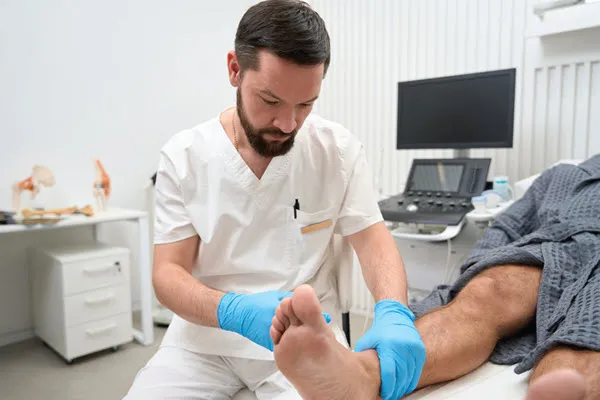Find out how to code this arthrogram in your podiatry practice.
When traditional joint X-rays don’t show the details necessary to make an accurate diagnosis, podiatrists can use arthrography to better view the body structure. Arthrography is the process of injecting contrast media directly into a joint and is used for the identification and staging of conditions such as osteochondritis dissecans of the talus, anterolateral soft tissue impingement, and chronic lateral ankle instability.
Unlike some other contrast-related codes, arthrography procedures require an extra code for the contrast use. This is why, as a medical coder, you should stay on your toes in the event an arthrogram report enters your workflow.
Read on to learn more about arthrography coding and how to properly report the procedure.
Understand Arthrography Examinations
Podiatrists and radiologists have multiple options when it comes to imaging the joints, and a provider will choose arthrography when the provider needs to examine a joint in more detail than standard imaging allows. Providers use arthrography when they are unable to clearly view the joint’s structure and function with traditional X-rays. An arthrography exam is a series of X-ray images taken of the joint in different positions.

The major difference between arthrograms and X-rays, however, is that prior to the examination, the radiologist injects contrast dye into the joint using a long, thin needle. The contrast dye helps certain body structures stand out on the images, so they’re easier to visualize and assess. According to Jennifer McNamara, CPC, CCS, CRC, CPMA, CDEO, COSC, CGSC, COPC, director of healthcare training and practice support at Healthcare Inspired LLC, in Bella Vista, Arkansas, “The arthrogram will provide more detail for the examiner as it allows for better visualization of the joint structures compared to a regular X-ray, which primarily shows the bones only.”
Podiatrists order arthrography exams for several reasons, including:
Anatomy of Arthrography Codes
The CPT® code book includes several arthrography codes that differ according to body structure. For an arthrogram of the ankle, you would choose code 73615 (Radiologic examination, ankle, arthrography, radiological supervision and interpretation).

Recognize RS&I: You’ll notice the descriptor for the arthrography code listed above includes the wording “radiological supervision and interpretation” (RS&I). According to the CPT® guidelines, all RS&I codes require:
Get to Know the Contrast Injection Codes
The next step is to assign the required code for the contrast injection. Like the arthrography codes, each injection code is tied to the body structure injected. For an arthrography for the ankle requiring dye injection, you would use code 27648 (Injection procedure for ankle arthrography).
Try This Ankle Arthrography Scenario
Review the following scenario to put your arthrography coding knowledge into practice.
Scenario: A 75-year-old patient is referred to your podiatry practice for right ankle arthrography. The patient has been suffering from chronic right ankle pain for several months following a bad sprain that may not have healed correctly. The radiologist performs an arthrography to evaluate the patient’s ankle for the cause of the pain. The patient was prepped, then the radiologist injected contrast material into the right ankle and captured the necessary images.
For this scenario, you’ll assign code 73615 on your claim. You might also be required to append modifier RT (Right side) to the code to indicate laterality, but you should review your individual payer preferences to be sure. You will also code for the contrast using 27648. Notice with both the contrast and the imaging code, there is nothing mentioned related to number of images, so you will just use these codes one time regardless of the number of images taken during the visit.
Make note: CPT® code 77002 (Fluoroscopic guidance for needle placement (eg, biopsy, aspiration, injection, localization device) (List separately in addition to code for primary procedure)) is already included in all arthrography codes and should not be added to the claim. “Adding this code to your claim will result in a denial when the work associated with it is part of the procedure,” warns McNamara.
